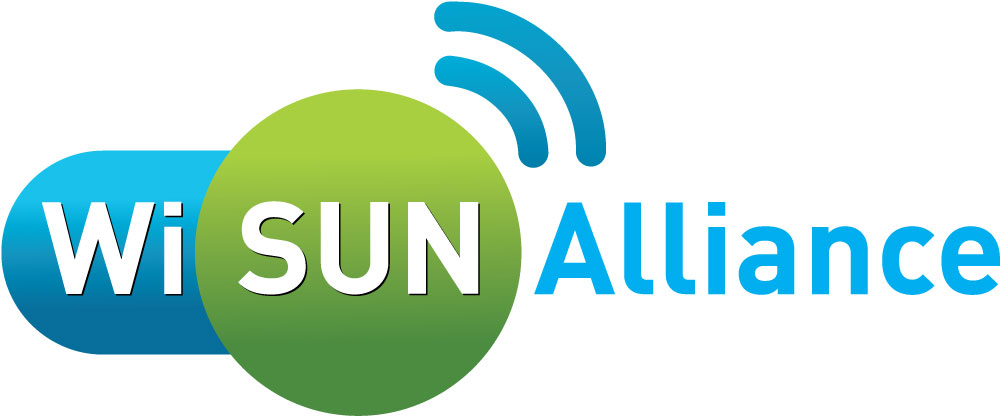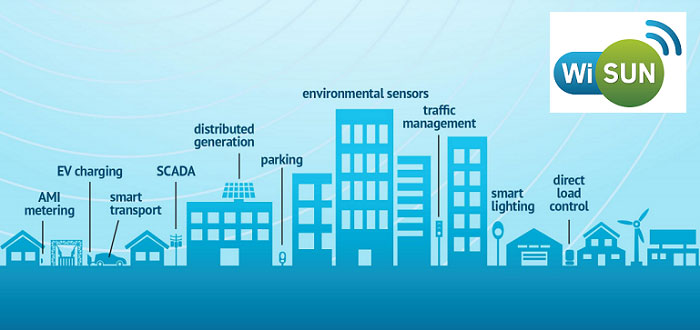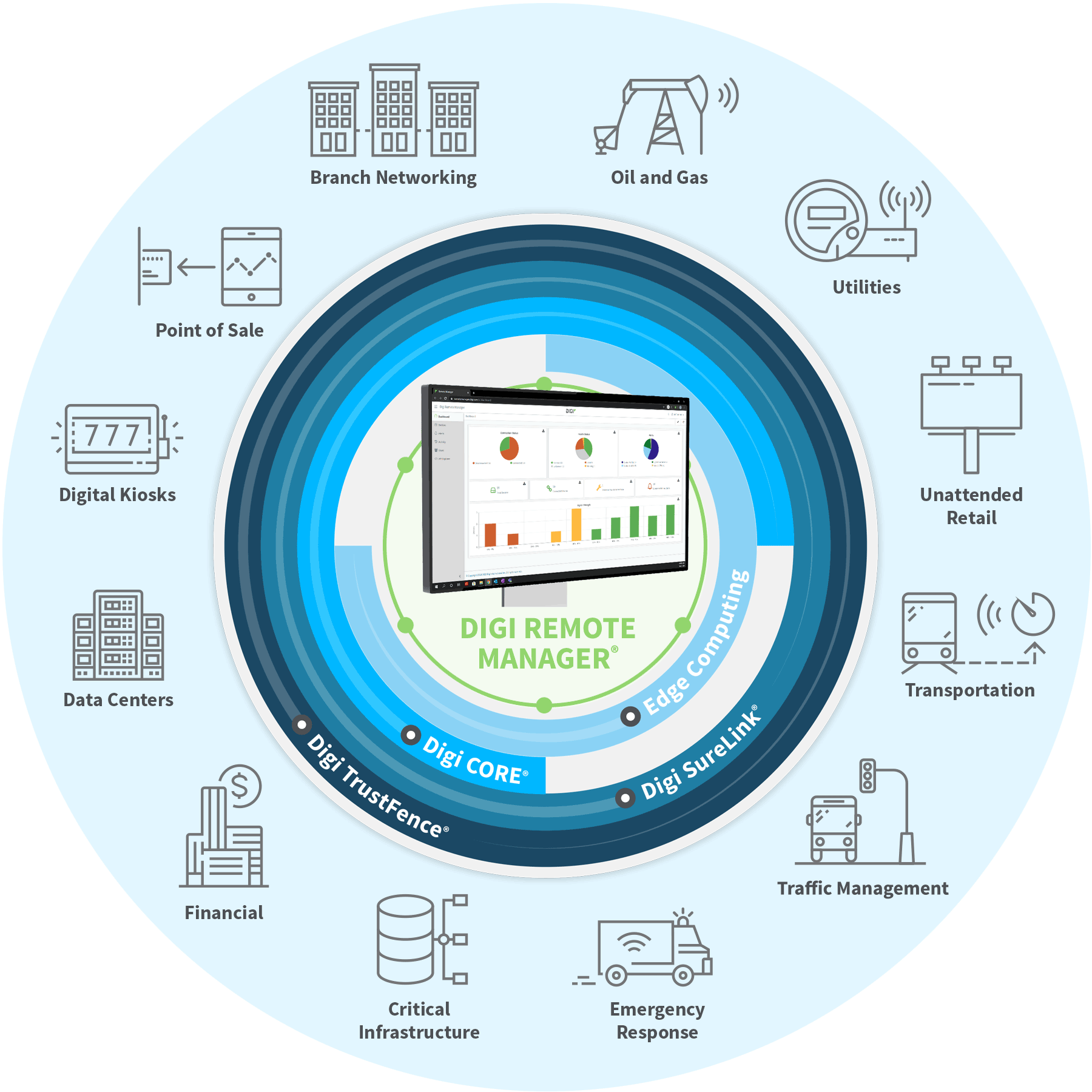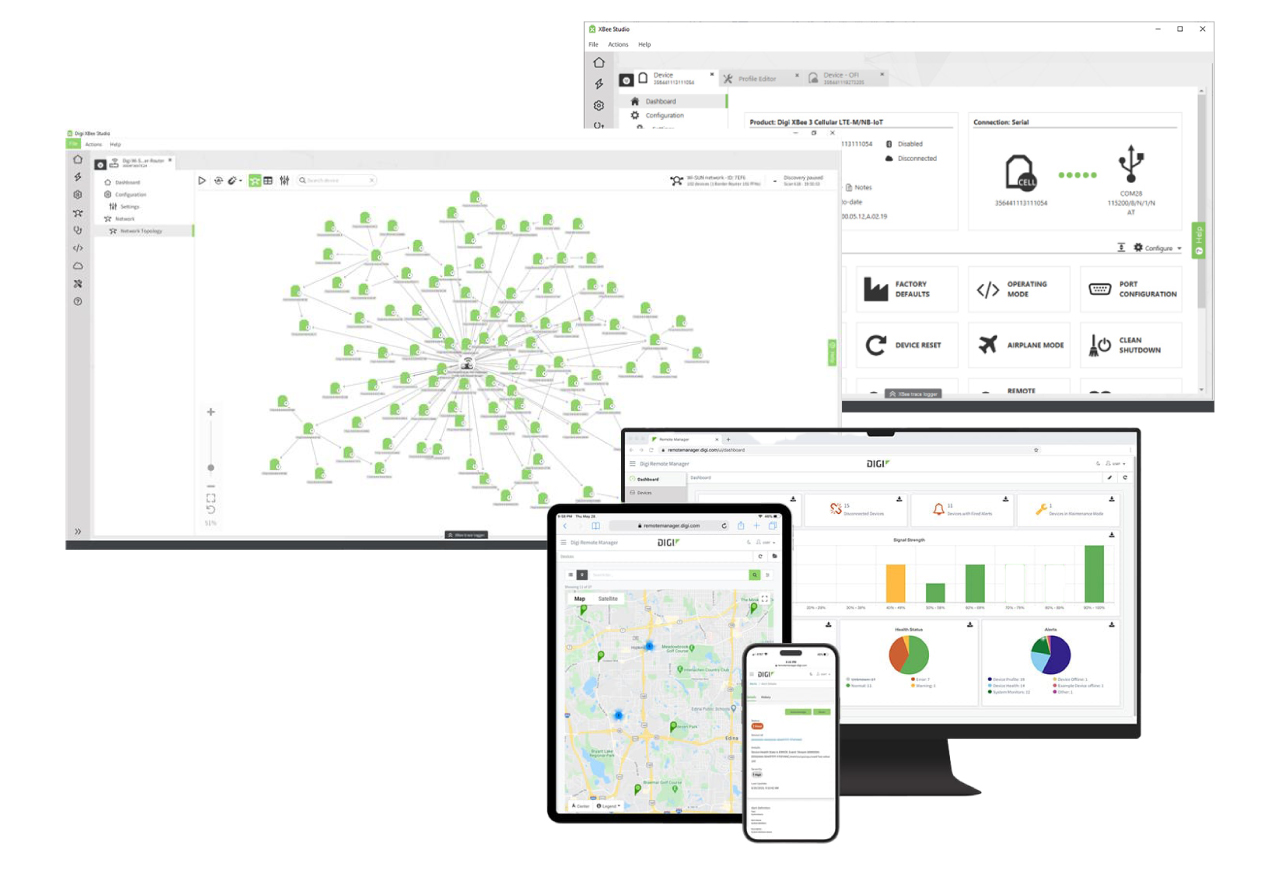Over 100 million devices are already deployed globally in utility networks today, and amidst this incredible growth, the Wi-SUN® protocol has demonstrated its reliability in some of the world’s most demanding applications. Now, Digi International and Silicon Labs are bringing this proven technology to a broader market with the industry’s first complete, integrated, end-to-end Wi-SUN solution.
With the rapid evolution of the IoT landscape, organizations across industries are seeking robust, scalable connectivity solutions that can meet the demands of mission-critical applications. While various wireless technologies compete for attention, the Wi-SUN standard stands out for large-scale outdoor IoT deployments.
In this post, we’ll share insights on this robust standard and how the Wi-SUN solution from Digi and Si-Labs is making it possible to rapidly plan and deploy massive, robust and secure networks.
Why Wi-SUN? Understanding the Technology Advantage
Wi-SUN (Wireless Smart Ubiquitous Network) represents the leading IPv6-based sub-GHz mesh networking technology for IoT applications. Built on IEEE 802.15.4g standards and governed by the Wi-SUN Alliance®, which includes over 300 members, Wi-SUN creates self-forming, self-healing wireless mesh networks that have proven their reliability in mission-critical applications at scale across the globe.

Think of it this way: traditional star topology networks function like a hub-and-spoke system where everything depends on a central gateway. If that gateway fails, the entire network goes down. Wi-SUN’s mesh architecture works differently. Mesh networks help improve reliability by removing single points of failure. Each device can communicate through multiple paths, automatically routing around obstacles, interference, or failed nodes. This resilient architecture ensures uninterrupted operation in challenging environments.
Operating in unlicensed sub-GHz frequency bands, a Wi-SUN solution delivers superior range and building penetration compared to 2.4 GHz alternatives. Depending on the environment, individual radios can achieve ranges of 0.5 mile in urban areas (up to 1 mile with high-powered radios), and 6+ miles outdoors. The mesh networking aspect extends range dramatically beyond the individual radio.
The technology supports both battery-operated and powered infrastructure nodes, with adaptable data rates from 50 kbps to 2.4 Mbps to match application-specific requirements. The open standards-based approach delivers enterprise-grade security, interoperability across multiple vendors, and scalable connectivity from single sites to entire regions.
Think of it this way: traditional star topology networks function like a hub-and-spoke system where everything depends on a central gateway. If that gateway fails, the entire network goes down. Wi-SUN’s mesh architecture works differently. Mesh networks help improve reliability by removing single points of failure. Each device can communicate through multiple paths, automatically routing around obstacles, interference, or failed nodes. This resilient architecture ensures uninterrupted operation in challenging environments.
Operating in unlicensed sub-GHz frequency bands, a Wi-SUN solution delivers superior range and building penetration compared to 2.4 GHz alternatives. Depending on the environment, individual radios can achieve ranges of 0.5 mile in urban areas (up to 1 mile with high-powered radios), and 6+ miles outdoors. The mesh networking aspect extends range dramatically beyond the individual radio.
The technology supports both battery-operated and powered infrastructure nodes, with adaptable data rates from 50 kbps to 2.4 Mbps to match application-specific requirements. The open standards-based approach delivers enterprise-grade security, interoperability across multiple vendors, and scalable connectivity from single sites to entire regions.
Real-World Proof: Wi-SUN Solutions in Action
The true measure of any technology lies in its real-world performance. Wi-SUN has proven itself through major deployments that operate reliably year after year:
- TEPCO’s Tokyo Smart Grid: One of the world’s largest Wi-SUN network rollouts connects tens of millions of smart meters in Tokyo, Japan, processing nearly one billion data packets daily with exceptional reliability.
- Miami’s Connected Infrastructure: Miami’s connected streetlight network (FPL), with over 500,000 units, is reinforced by a larger Wi-SUN mesh canopy that includes more than 5 million connected devices as part of the Advanced Metering Infrastructure (AMI).
- Paris Smart Lighting: A Wi-SUN mesh network connects 280,000 streetlights across the city, making Paris one of the top cities globally for implementing connected streetlights. The deployment delivers up to 70% savings on annual energy costs with consistent performance year-round.
- London’s Smart City Foundation: The City of London replaced 15,000 street lights (covered by a total of just 12 border routers) throughout the Square Mile with a Wi-SUN network explicitly designed as a “future-proof” foundation. The city has since expanded beyond lighting to include environmental monitoring sensors for air quality, traffic and parking management systems, and public safety sensors on riverside lifebelt holders that alert emergency services when removed.
- Infrastructure Monitoring in Japan: The Wi-SUN solution monitors slope and embankment deterioration from heavy rain or earthquakes, and tracks cable tension on bridges to assess conditions throughout their lifetime and under stress from heavy traffic.
These aren’t pilot projects. They’re large-scale, mission-critical deployments operating continuously in diverse weather conditions and challenging urban environments, demonstrating Wi-SUN’s exceptional reliability, scalability, and business value at massive scale.
From Utility to Ubiquity: What Works at Scale Works Everywhere
Here’s the key insight: the same characteristics that make Wi-SUN solutions suitable for utility-grade deployments at massive scale make this protocol ideal for IoT use cases across every industry. When a technology can reliably manage tens of millions of smart meters operating 24/7 for decades, processing billions of transactions daily, it has proven capabilities that translate directly to other demanding applications.

The reliability requirements for a utility managing millions of endpoints are among the most stringent in any industry. Utilities cannot tolerate network failures that prevent meter reading, cause a loss of revenue data, or compromise grid management. The security requirements are equally demanding, as utility networks are classified as critical infrastructure and face constant cyber threats.
If a Wi-SUN solution can meet these utility-grade requirements at scale, it’s more than capable of handling applications like solar panel installations, building automation and control systems, oil and gas monitoring equipment, and asset management across distributed facilities. The same long-range connectivity that links smart meters across neighborhoods works equally well for monitoring solar installations across a commercial campus, tracking equipment across an industrial facility, or connecting sensors throughout an oil field.
The examples from London and bridge monitoring in Japan illustrate this perfectly. London’s network began with streetlighting but expanded to air quality monitoring stations, parking sensors, and public safety systems, all running on the same proven infrastructure. Bridge cable monitoring and slope stability sensors in Japan represent infrastructure assessment points delivering real-world results. The opportunities are significant: whether you’re transmitting meter readings, air quality data, structural stress measurements, or safety alarms, Wi-SUN delivers the reliability and performance your applications demand.
The Digi XBee® for Wi-SUN Solution: Build, Deploy, Manage
The Digi XBee for Wi-SUN solution addresses the complete Wi-SUN network lifecycle through three integrated components designed to work seamlessly together from day one, while maintaining full interoperability with the broader Wi-SUN ecosystem. The Digi Wi-SUN solution enables organizations and solution providers to build, deploy, and manage Wi-SUN networks at scale.

Build: Smart Digi XBee for Wi-SUN Modules
Built on Silicon Labs’ EFR32 platform featuring their Secure Vault™ technology with PSA Certified Level 3 status (the highest level of IoT security certification), Digi XBee for Wi-SUN modules deliver the reliability and security that critical applications demand.

Available in three industry-standard form factors (through-hole, surface-mount, and micro mount) that have enabled over 25 million module deployments globally, Digi XBee for Wi-SUN modules provide maximum design flexibility. The modules come in two variants: Leaf Node (LFN) modules achieve up to 10-year battery life for remote sensors with optional Bluetooth LE connectivity, while Full Function Node (FFN) modules are powered devices that support high-throughput applications with data rates up to 2.4 Mbps.
What sets Digi XBee for Wi-SUN modules apart is their edge intelligence capability. MicroPython programmability enables on-module processing and local control, reducing cloud dependencies and enabling real-time responses. For example, a smart streetlight equipped with a Digi XBee for Wi-SUN module can automatically adjust brightness based on pedestrian detection and ambient conditions, a solar tracker can optimize panel positioning based on irradiance sensors, or a building automation controller can adjust HVAC settings based on occupancy patterns, all without constantly communicating with the cloud, and the resulting latency.
Pre-injected certificates eliminate complex security provisioning, allowing devices to join networks securely right out of the box. The familiar XBee footprint simplifies integration for developers already experienced with XBee technology while providing access to Wi-SUN’s advanced mesh networking capabilities.
Deploy: Smart Digi XBee Hive Border Routers
The Digi XBee Hive Border Router serves as the gateway between your Wi-SUN mesh network and your existing infrastructure. These purpose-built devices scale from pilot projects to enterprise deployments, supporting hundreds of Wi-SUN nodes per router.

Built on Digi Accelerated Linux with the integrated Digi TrustFence® security framework, Digi XBee Hive Border Routers leverage the same highest level of Silicon Labs Secure Vault capabilities as our Digi XBee for Wi-SUN modules, creating a complete security ecosystem at every network level.
The multicore processor architecture (dual Cortex-A7 @ 650 MHz + Cortex-M4 @ 209 MHz) delivers the performance needed for advanced applications. Multiple connectivity options including LTE Cat 1 cellular, dual-band Wi-Fi 5 with Bluetooth 5.2, 10/100 Mbit Ethernet, and software-selectable RS-232/RS485 serial interfaces ensure reliable backhaul connectivity regardless of site conditions.
The integrated edge computing platform in Digi XBee Hive Border Routers includes managed Linux LXC containers support through Digi’s Containers-as-a-Service functionality, enabling deployment of custom applications directly on the border router. Python 3 support and full command-line interface (CLI) configuration enable local data processing, real-time decision-making, and automated task execution, reducing bandwidth costs and improving response times.
Advanced networking features include full IPv6 support, Digi WAN Bonding to combine multiple connections for resilient connectivity, and IPv6/IPv4 address translation that seamlessly integrates Wi-SUN networks into existing IT infrastructures without requiring architecture changes.
Manage: Digi Remote Manager® and Digi XBee Studio Tools
Digi Remote Manager serves as the cloud-based command center for complete Wi-SUN network lifecycle management at scale. Features include centralized network configuration and monitoring across thousands of nodes, automated PKI certificate management, OTA firmware and software updates, real-time alerts and detailed reports on network health, and open APIs for third-party system integration.

Digi XBee Studio provides comprehensive development, deployment, and local technician support tools. The tool simplifies network setup, configuration testing, and field troubleshooting, enabling faster deployment timelines and reduced operational complexity.

Distributed Edge Intelligence: Processing Where It Matters
The Digi XBee for Wi-SUN solution delivers sophisticated edge intelligence capabilities at both the module and border router levels, enabling real-time decision-making and autonomous operation across the network. Think globally, process locally.
At the module level, Digi XBee for Wi-SUN modules with MicroPython programmability enable local data processing and autonomous decision-making. This reduces network traffic and backend operational costs while improving system responsiveness. Smart streetlights can automatically adjust brightness, solar trackers can optimize positioning, building controllers can manage HVAC and lighting, and industrial sensors can trigger local alarms when thresholds are exceeded.
At the border router level, the dual processor architecture of Digi XBee Hive Border Routers supports an integrated edge computing platform with managed Linux containers and Python 3 environments, enabling sophisticated local analytics across hundreds of connected nodes. Digi XBee Hive Border Routers aggregate sensor data, execute business logic, and coordinate network-wide responses. This is critical for applications requiring local response or continued operation during WAN connectivity interruptions.
This distributed edge intelligence approach reduces bandwidth requirements, minimizes network load, improves response times for critical applications, and enables continued operation during connectivity interruptions. Since Wi-SUN creates an IP-based mesh network where every node is an addressable IP device, integration with existing IT infrastructure becomes straightforward using standard networking protocols and tools.
Global Open Solutions Win
The industry’s first complete, open, end-to-end Wi-SUN solution delivers measurable advantages over complex multi-vendor integrations. Pre-validated component compatibility and comprehensive development tools accelerate deployment timelines from months to weeks. Edge intelligence at both Digi XBee for Wi-SUN modules and Digi XBee Hive Border Router levels enables local processing and autonomous operation, reducing cloud dependencies and operational costs.
Single-vendor support reduces integration risk and simplifies troubleshooting through unified management tools. All components are optimized to work seamlessly together from day one, while Wi-SUN CERTIFIED modules ensure proven ecosystem interoperability.
With global regulatory approvals for US, Canada, Europe, India, and Japan, and industrial operating temperature ranges, the Digi XBee for Wi-SUN Solution is production-ready for demanding deployments around the globe.
Learn More and Get Started
In our next post, we’ll dive deep into the security architecture that makes Wi-SUN suitable for critical infrastructure, exploring how hardware-anchored security, open standards, and seamless IT integration create a foundation you can trust for decades of operation.
Ready to explore the opportunity? Learn more about what’s coming, available early evaluation options, and deployment capabilities at www.digi.com/wi-SUN.
Next Steps